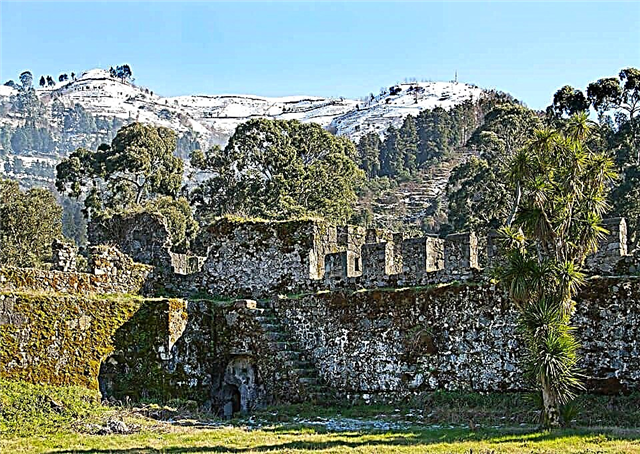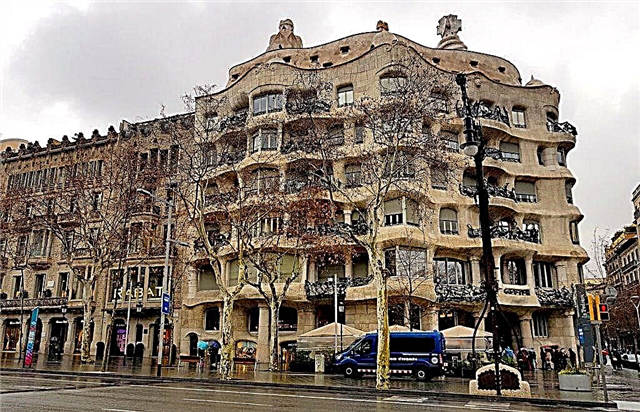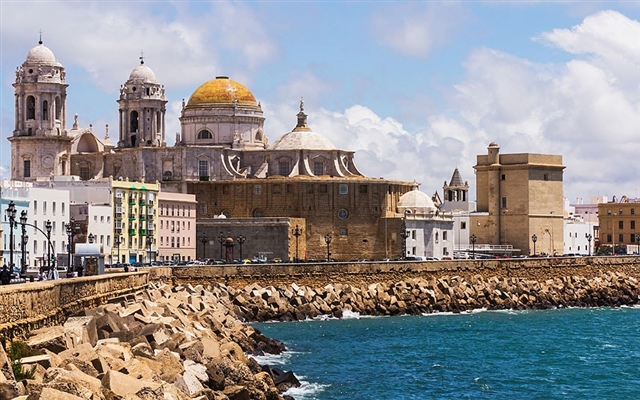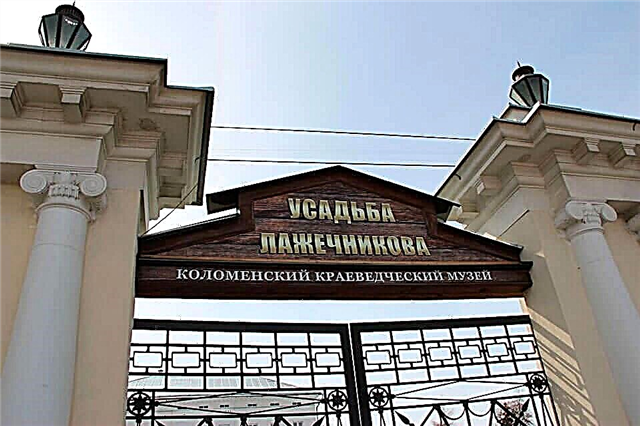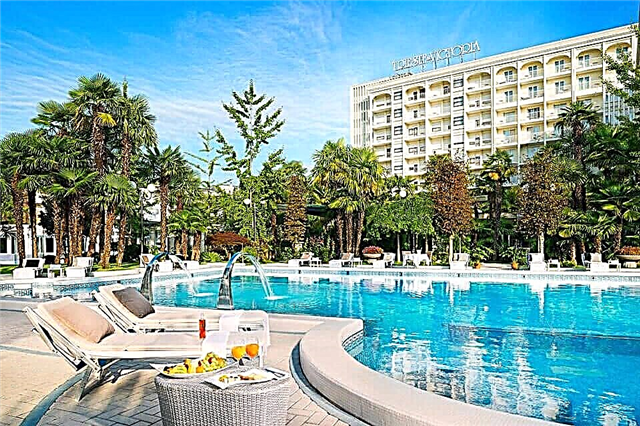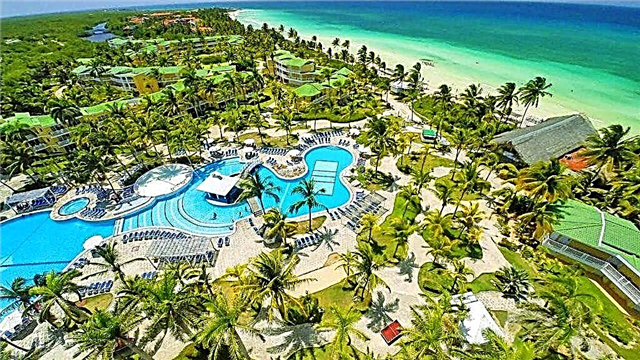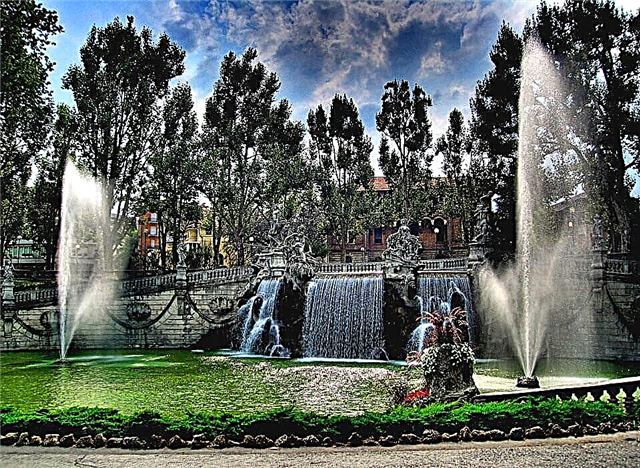What to see in Turin in 1 day on your own is not an idle question. After all, this city is ideal for tourists. There is everything here: the great Alps, which are visible from any point, monuments of architecture and culture, well-groomed streets and squares. Some guidebooks joke: in order to become completely perfect, Turin needs to add the sea to the already existing beauties. But it is there too! True, prehistoric. At Monte dei Cappuccini, fossils of marine organisms and shells are found. The tourist is in time trouble: he wants to see everything, but time is sorely lacking. But if you correctly build the route, then you can see the main interesting objects in 1 day. And if something remains uncovered, well! - will have to return to the charming city again!
Palantine gate

These arches were built in the 1st century BC. Their original purpose was the entrance and exit gates in the fortress wall. Through them it was possible to get into the settlement, which was located on the site of the modern city. And they are called the Palantine gates, because they are located next to the Palazzo Reale.
The history of the monument goes back centuries:
- arches and towers were built in the 1st century BC
- in the Middle Ages, the building was complemented by 2 hexagonal towers over 30 meters high
- reconstruction continued: in the 15th century, the battlements were completed on the towers
- in the 18th century, Antonio Bernola proved that the Porta Palatina requires the attention of the authorities, because it is an architectural monument (the restoration of the building has begun)
- in the 19th century, the reconstruction of the building was carried out (the superstructures made in the Middle Ages were destroyed)
- in the 20th century, the city authorities supplemented the Porta Palatina with bronze statues: the gate became more picturesque
Near the Palantine Gate, the foundation of the guard's resting place and a fragment of the fortress wall, built in the Roman era, have been preserved.
Sabauda Gallery

The modern collection began with a donation from the monks of the House of Savoy to the Kingdom of Sardinia. Today, you can see canvases created by European artists from the Renaissance to the 18th century. The halls contain paintings by painters of the Italian, Spanish and northern schools. In the corridors there are posters depicting artists and sayings of art critics about their work.

Sometimes the plots of paintings by different authors are repeated:
- Saint Francis receives the stigmata of Jesus Christ. Van Eyck and Pedro Fernandez reflected this theme.
- The Nativity of the Virgin was portrayed by Apollonio di Giovanni. Bellini is the author of a traditional gift for a woman who has given birth to a girl: a round table with a painting. It is displayed next to the canvas.
- Antonio Polaiolo and Felippo Lippo depicted stories from the life of the Archangel Raphael. This is a fairly popular subject among the painters of the Middle Ages.
- Many artists have depicted the bringing of gifts to the newborn Jesus by the Magi in the gallery of Sabauda.
- The painters did not ignore the plot about the mother of the Virgin Mary - St. Anne. She is considered to heal from the plague and leprosy, so a sick person is drawn next to her, thirsting for recovery.
- Many artists were fascinated by the myths of Ancient Greece.
- And some authors have reflected scenes from the life of commoners. Bassano has a credible description of the city market.
Galleria Sabauda is a small but the most significant exhibition in Turin.
Cathedral of John the Baptist

On the site where the Cathedral of John the Baptist stands today, the first Christian churches were built earlier: Giovanni Batista, Saint Savior and Saint Mary. By order of Cardinal Rovere, the architect Caprina demolished the existing buildings and built the Cathedral of John the Baptist. The blasphemy was justified by the fact that the main temple of the city had to be erected on a place that had been prayed for over the years. Construction was carried out at an accelerated pace: it took only 7 years from laying the foundation to the consecration. The first service was held in 1498, when a white stone was used for the temple. And today the cathedral stands out against the general background, because all other buildings in the city are much darker. The construction forms are extremely strict. An elegant staircase leads inside.
After 2 centuries, it took to build a special room to store the shroud of Jesus Christ. The architect Guarini brilliantly coped with this task. The chapel is located on a dais, you have to climb to it by steps hewn out of dark marble; as the ascent increases, the illumination increases: all this symbolizes the path of the soul from darkness to light. But for pilgrims and tourists in the chapel only a copy of the canvas is exhibited: the original is kept in the treasury of the cathedral, it is shown once every 25 years.
Royal Palace

In 1997, Palazzo Reale was included in the UNESCO World Cultural Heritage List. This site is eagerly visited by tourists arriving in Turin.
The history of the complex is quite long:
- Construction began in 1646. For the permanent residence of the Savoy royal dynasty, a building was required that would meet the then notions of luxury. The place was chosen as a symbolic one: earlier it housed the palace of the Bishop of Turin (the building had to be demolished). The work went on without interruption for 16 years.
- The court architects built the palace, giving it the features of baroque architecture. Representatives of the royal family lived in the building until 1865. After the capital was moved to Florence, the residence became secondary.
- Subsequently, the palace was completed: the architects gave it the features of Rococo and neoclassicism. It is difficult to define the current style of the complex. By its appearance, it resembles both the Palace of Versailles and the palace in Peterhof.
- In 1946, Palazzo Reale became state property. After minor restoration, it turned into a museum of the Savoy dynasty.
For quite a long time, a unique relic was kept in the Palazzo Reale: the Shroud of Turin. But after the construction of the Cathedral of John the Baptist, it was moved to the chapel. Palazzo Reale is connected to the cathedral complex by an underground passage.
Royal Armory

The founder of the modern exhibition was Carlo Alberto: in 1832 he began collecting weapons. The location was perfect: part of the Palazzo Reale complex, practically next to the official residence. Sources of storage units are:
- arsenals of Turin and Genoa
- the Fabrizza family meeting
- Sankikiko's personal collection
Museum work was carried out quite competently. Already in 1840, the storage units were systematized: their catalog was compiled. The exposition received its first visitors in 1837. The guests noted the excellent selection and competent arrangement of items. Carlo Alberto was pleased. In 1554, the exhibition was supplemented with lithographs and books useful for the study of weapons from different times.
The library became a visited place: researchers and ordinary townspeople who were interested in this topic came here. 1946 changed the status of the gallery: it became a state gallery. The restoration was completed in 2005. Today, tourists will have to familiarize themselves with 5000 storage units: daggers, halberds, arquebusses, knightly armor are presented. The collection is constantly updated. The administration of the complex arranges thematic exhibitions, so nobody will be bored in the center.
Palazzo Madama

Palazzo Madama is built on a line of fortifications built to protect the city by the ancient Romans. The colony was founded in the 1st century: then it was a small fortress. In the Middle Ages, the status of the building changed: it was expanded, several towers were added. The building has acquired a rectangular profile. After the Savoy dynasty came to power, it became possible to use the Palazzo as a royal residence. This is exactly what happened before the construction of the Palazzo Reale.
But even after the change in the location of the royal family, the importance of the palace did not diminish: the dowager queens preferred to live out their sad days here. Until her death, Marie-Cristina of France stayed in the Palazzo Madama. By the way, the building got its current name thanks to this very fact. Subsequently, the Palazzo Madama served for court sessions, and famous artists were exhibited there. And since 1934, the building has housed an exposition of antique art.
Some researchers claim that a relic was kept here for a short time: the Shroud of Turin. The modern appearance of the Palazzo is unusual: it has a richly decorated facade and a modest overall appearance. Perhaps this is due to the fact that the building was originally used to defend the city. The exposition, housed in Palazzo Madama, will delight not only with antique artifacts: there is a rich collection of items from the Middle Ages.
Theater Reggio

Despite the fact that Turin was the capital of the duchy, it did not have an opera house. The performances were presented either in the open air or on the stages of drama theaters. And only in 1713, on behalf of Vittorio Amedeo of Savoy, the architect Juvara began to work on the building project. But construction began only after the death of the architect. In 1738, the project was finalized by Alfieri at the request of Duke Emmanuele 3 of Savoy. The monarch set a task: to build a luxurious royal theater. The task was successfully completed: in just 2 years, a building with an auditorium for 2500 seats and excellent acoustics was erected. And the spectators were accommodated on 5 tiers.
With this, the first favorable period in the history of Reggio ended:
- For 6 years (1792-1798) the theater did not work. After the reopening, a series of name changes followed (National, Bolshoi Theater of Arts, Imperial Theater). And the repertoire has also changed: it was necessary to take into account the tastes of the French.
- In 1914, the building again belonged to the Dukes of Savoy, the name was restored: the Royal Theater. Then Reggio was transferred to the municipality.
- The First World War affected the theater: it was closed until 1919.
- In February 1936, the inside of the theater burned out: the façade partially survived. After reconstruction, Reggio only opened in April 1973.
Despite difficult periods in the history of the theater, its stage hosted world celebrities. Toscanini, Puccini, Wagner, Strauss worked here. Today Reggio is the center of the city's musical and cultural life.
Mole Antonelliana

The height of the Mole Antonelliana is over 160 m, the spire is about 50 m. The tower is the tallest brick building in Europe. The structures of the late period were built using modern technologies and materials (glass, steel, concrete, plastic), and the Mole-Antonneliana was built from good old bricks. The history of the tower is unusual. The city's Jewish community hired the architect Antonelli to design the synagogue. The money was collected by the whole world.
Antonelli announced a small amount, but appointed a short term. But after 13 years, it became clear that the end of the work was not yet in sight, although the construction budget was exceeded several times. The community stopped funding and relinquished building rights. In 1889, the tower was nevertheless completed with the money of the municipality. It got its name from the name of the designer: Mole Antonelliana, and it houses the Risorgimento Museum. In 1938 the exhibition was moved to another location.
The tower is eagerly visited by tourists: it has an observation deck, from where a stunning panorama of the old city opens. You can get here by high-speed elevator. And then you should visit the National Museum of Cinematography, located in the tower room, and listen to funny stories that took place on the set of Italian films.
Risorgimento Museum

The exposition describes the most important period in the history of Turin and Italy: the struggle against the occupation and the unification of the country. And the city, as the capital of the Duchy of Savoy, played a leading role in the national liberation movement. The exhibition was originally housed in the Mole Antonellina. She was placed here immediately after the opening of the constructed tower. But in 1938, the Risorgimento was transferred to Palazzo Giornale (Valentino Park). There, the exposition did not stay long and soon moved to Palazzo Carignano, where it is located today.
In 2006, the Risorgimento was closed for restoration and replenishment of the exhibition. Purpose of the work: to show the influence of the events that took place in the historical period of the Risorgimento on the political situation in European countries. The opening of the renewed exposition was timed to the celebration of the 150th anniversary of the unification of Italy. The modern exhibition occupies 30 rooms of the Palazzo Carignano. Here you can see: weapons, books, paintings, documents, flags, uniforms from the Risorgimento era.
The center of the exposition is the Chamber of Deputies of the subalpine parliament. It is the only reconstructed parliamentary meeting room in the world. The complex is equipped with modern equipment: interactive screens, audio and video guides are offered to guests. For people with limited mobility, ramps and lifts are installed. It is possible to order an excursion.
Palazzo carignano

The palace resembles the Royal Palace in beauty and luxury, although it was intended to live on the side line of the Dukes of Savoy. Unusual architecture and interiors attract visitors to Turin. Palazzo Carignano is a UNESCO World Heritage Site. The building began to be built in 1684. The author of the project was Guarino Guarini, and Pietro Somazzi and Stefano Legnani participated in the arrangement of the interiors.
Guarini talentedly changed the traditional style of the facade: the red-brick baroque took on a wave-like contour. Indoor staircases completely follow the outer contours. The window openings of the 1st floor are unusually decorated: they are bordered by the attire of the Indians. So the architect immortalized the merits of the Carignan regiment in the conquest of North America by French troops.
And on the reverse side of the Palazzo Carignano is stunningly beautiful: the facade is made in the pseudo Renaissance style and is decorated with porticoes, columns and bas-reliefs. A statue of the Duke of Sardinia Carl Albert is installed in front of the entrance. At the beginning of the 19th century, Carignano became the property of the state of Sardinia, and before the transfer of the country's capital to Rome, the first government sat in the Palazzo. In the 90s of the twentieth century, a large-scale reconstruction of the palace was carried out; today it houses an interesting exposition: the Risorgimento.
Egyptian Museum

The initiator of the creation of the exposition was the Duke of Savoy Carl Felix. He acquired Drovetti's personal collection of over 5,500 artifacts. To this collection, the Duke added the personal collection of the Dukes of Savoy, which was assembled by Vitaliano Donatti. This is how the Egyptian Museum in Turin appeared. Subsequently, the exposition was constantly replenished with finds made during excavations in Egypt.
The laws of that time allowed the export of 50% of items to another country. Italy actively participated in archaeological work, therefore the collection of the center is the second in value and volume after the Cairo one. The permanent exhibition is located in the Palace of the Academy of Sciences. The building itself is worth seeing. The building was originally designed by the talented Guarino Guarini, but was completed by Michelangelo Garove.

Of the artifacts presented, you should definitely inspect:
- the oldest mummy
- Gebelein's canvas (the oldest painting on linen canvas)
- statue of Princess Redith (made of solid stone - granodiorite)
- tomb of the unknown
- the statue of Uahki (a perfectly preserved limestone sculpture)
- erotic papyrus (ancient satire on a love theme)
- gallery of sarcophagi
- gallery of kings
All artifacts have tablets in several languages. An audio guide can be rented at the box office.
Solferino Square

In the 18th century, Piazza del Bosco was an unremarkable place on the outskirts of the city. The buildings around were very diverse, and the shape of the square was irregular.The gardens added a little variety. But in the 19th century, the city authorities decided to reconstruct: the city grew and was actively upset. Piazza del Bosco was almost in the center. According to the project of Carlo Promi, the square became square, and the buildings surrounding it acquired a uniform style.
Unfortunately, most of the gardens had to be demolished: only one site survived (now it is a boulevard). At the end of the 19th century, the territory acquired its final shape: it became oval. The name has also changed: now it is Piazza del Solferino. This immortalized the memory of the final battle for independence at the town of Solferino. The last reconstruction was carried out at the beginning of the 21st century. For the 2006 Winter Olympics, the Atrium gallery was erected in the center, which was then demolished. But the center was supplemented by a designer sundial, built according to the project of Lucio Morra. Today you can relax here on one of the lawns planted with grass, walk along the boulevard or see popular monuments:
- fountain Angelica
- sculpture by Ferdinand of Savoy
- theater Alfieri
- Palazzo Fiorino

Tourists willingly take pictures near the blue and red clock installed in the center of Piazza del Solferino.
Temple of the Great Mother of God

The Gran Madre Temple was built by grateful citizens in honor of the restoration of the power of the Dukes of Savoy in the country. The decision to erect the building was made immediately after the defeat of Napoleon Bonaparte in 1814, and the first service in the Grand Madre was held in 1831.
The Temple of the Great Mother of God is strikingly different from Christian temples:
- he practically has no crosses
- its architecture does not apply the well-known rules used in the construction of churches
- the building is unusually located: the facade faces the Po, and the rear of the building is surrounded by hills
But the Gran Madre attracts tourists also with legends that Turinans say:
- The Gran Madre is the apex of the triangle that rules the dark forces (base is the London-San Francisco line)
- Gran Madre - part of the triangle that governs the forces of light (other components are Lyon and Prague)
- a finger has been cut off from the statue of Vera: if he were present, he would point to the place where the Holy Grail is hidden
- statue of Religion with its cross protects the place where the Holy Grail is located (therefore, the relic cannot be found)
- proximity to the Po river enhances the natural energy of the temple
Too many non-Christian symbols give the temple a special charm. By the way, the owner of the Gran Madre is a municipality, not the Roman Catholic Church.
Queen's villa

In 1562, by order of the Duke of Savoy Emmanuel, Turin became the capital of the state. And in order to exalt the ruling dynasty and give pomp to the city, the king decided to build palaces and mansions, attracting the most fashionable architects to design. Villa della Regina was created as a country residence for Maurizio, Cardinal of Savoy, in the early 17th century. And in the end, the wife of Victor Amedeus of Savoy, Anna Orleansky, began to own it. Then the residence acquired its current name: Villa della Regina.
When Rome became the capital of the united Italy, the garden and park complex was abandoned and useless. It gradually fell into disrepair, and during the Second World War it was badly damaged by bombing. Villa della Regina stood in ruins until 1997: at this time, the government decided to carry out a large-scale reconstruction of the garden and park ensemble. The work was carried out until 2006. For several years, the complex was restored to its historical appearance.
But it was not possible to return the former greatness: some interior details were lost forever. When inspecting the premises, this is noticeable even to an inexperienced tourist. The most successfully restored halls are decorated in Japanese and Chinese styles. The garden and park complex was restored quite accurately: paths were cleared, sculptures were installed, gazebos were repaired. But they refused to add the missing elements: statues are missing on some of the pedestals.
Capuchin Hill

At the time of the founding of the city and until the end of the 11th century, a fortress was located on this hill: from a height it was convenient to observe the crossing of the Po. Everyone arriving in Turin had to pass through the fortress gates for control. Then the Franciscans built a monastery on top. It is active: all people seeking peace and solitude find refuge here. Any tourist can come here and stay to reflect on existence.
But most often, on Monte dei Cappuccini, guests of the city come to see the stunning views of the city: the top of the hill is a natural observation deck from where you can see the whole of Turin. And on the slopes of Monte dei Capuccini, fossilized shells and the remains of marine organisms are found. Scientists have concluded that the mountain was once a hill located at the bottom of the sea.
Valentino castle

Not far from the building is the Church of St. Valentine, which is why the castle is named in honor of the revered saint. And it was built in the 13th century by the Dukes of Savoy as their own fortification. But in the 17th century, the new owner of the castle, Marie-Christine of France, rebuilt it. As a result, the residence acquired a look that has survived to this day. A characteristic feature of the building: a curved facade, the two sides of which are strikingly different. One is ceremonial and smart, the other is modest and ascetic.
In the early 19th century, Valentino was abandoned and dilapidated. But at the end it was transferred to the Polytechnic University. After reconstruction in 1900, the halls of the castle hosted the first art exhibition. Subsequently, they began to be held regularly. The unusual appearance of the Valentino castle, the original interiors contributed to its being included in the UNESCO World Heritage List.
Medieval village

This unique complex depicts the life of the inhabitants of the duchy of the 15th century. But it was built in the 19th century for the opening of the Industrial Exhibition. The authors of the project are a group of artists-historians. The village consists of houses in which peasants and poor townspeople lived, workshops (pottery, carpentry, weaving, smithy). A fortress was built nearby to protect a small settlement. The complex was supposed to be destroyed after the exhibition was closed, but the residents fell in love with the installation. Today the village welcomes guests from Italy and other countries. And on holidays, wine, cheese, fruits that are grown in Piedmont are sold here.
Fountain "Twelve months"

A great place for romantic get-togethers. And the fountain was built as part of a grandiose project to celebrate the 50th anniversary of the Constitution of Piedmont. The remaining elements of the exposition were dismantled after the end of the celebrations, and for 12 months they delight tourists to this day. The pool itself is slightly sloped. Water flows into it from the central fountain, and statues of 12 calendar months are installed on the edges of the gradually descending terrace, on pedestals. 4 compositions next to the waterfall symbolize 4 rivers flowing through Turin: Po, Dora, Stura, Sangone. There is a lot of greenery around the fountain, lanterns are lit in the evening. It is a popular destination with tourists from different countries.

